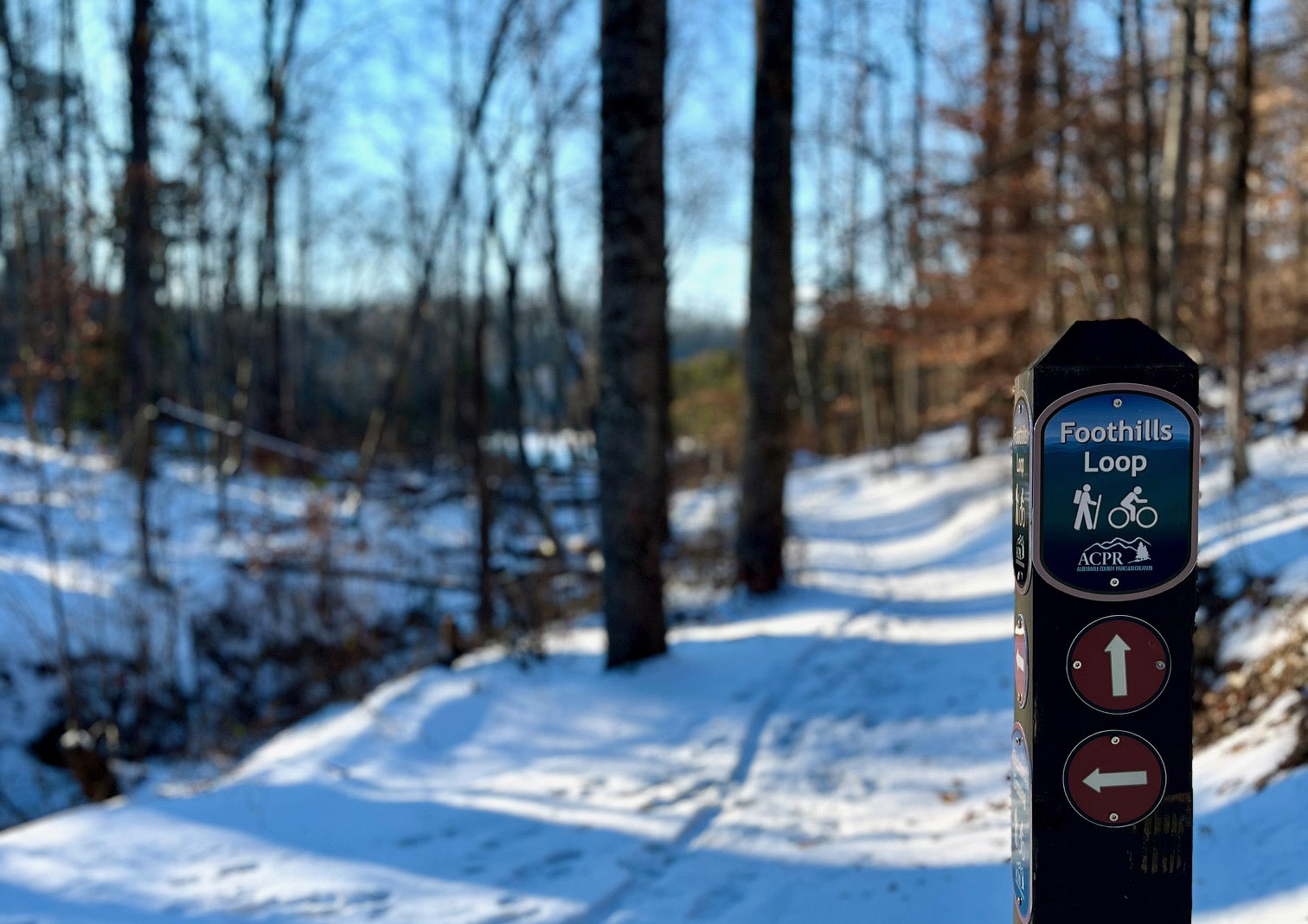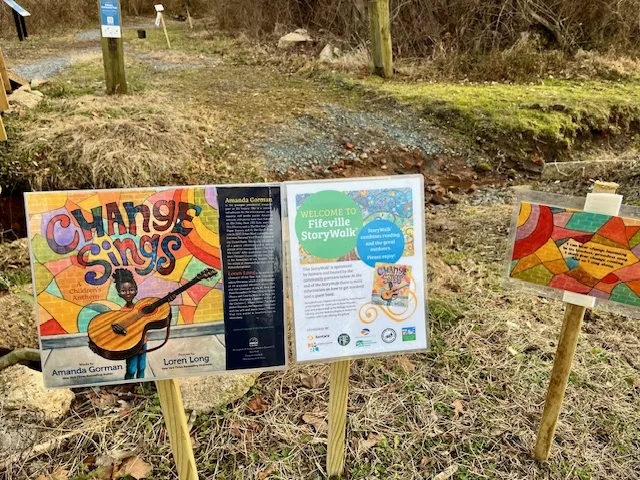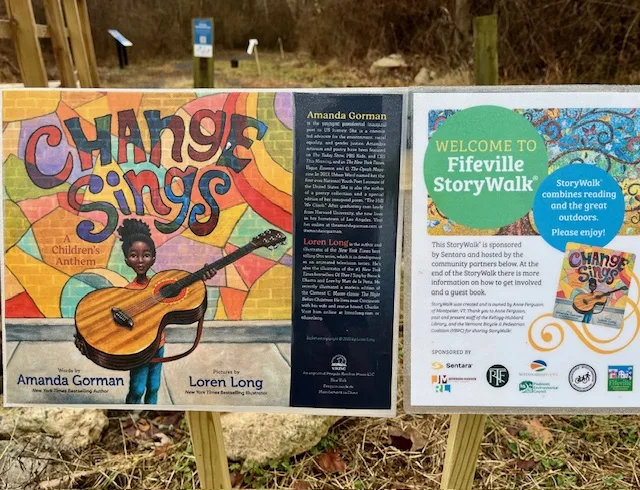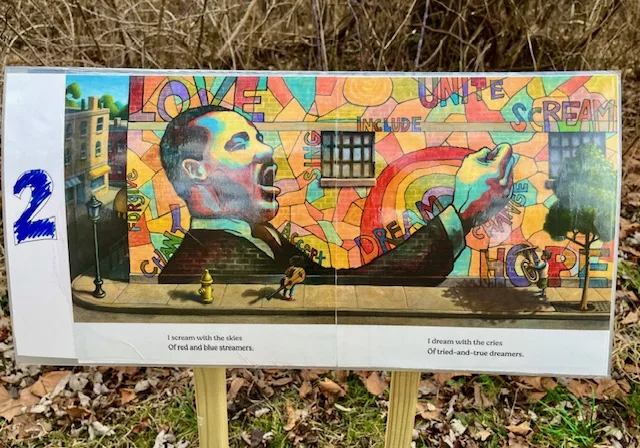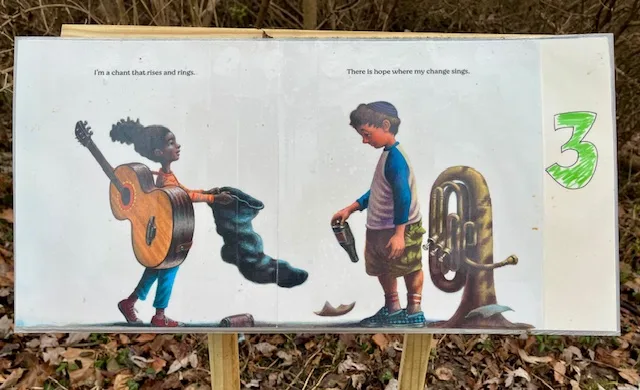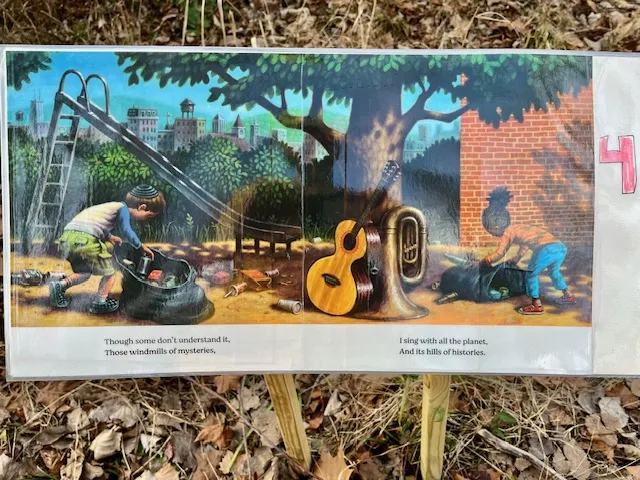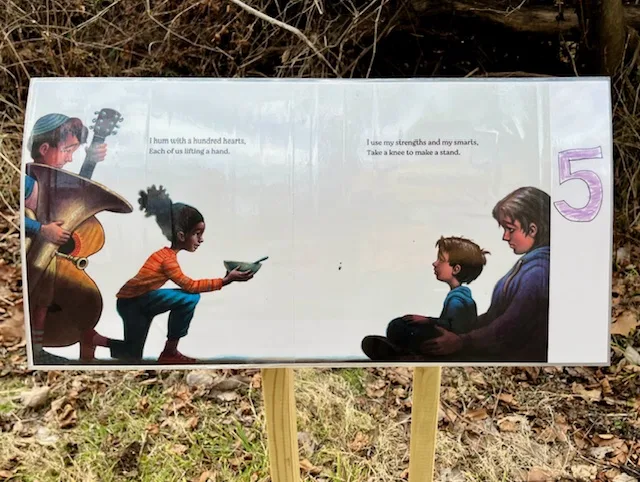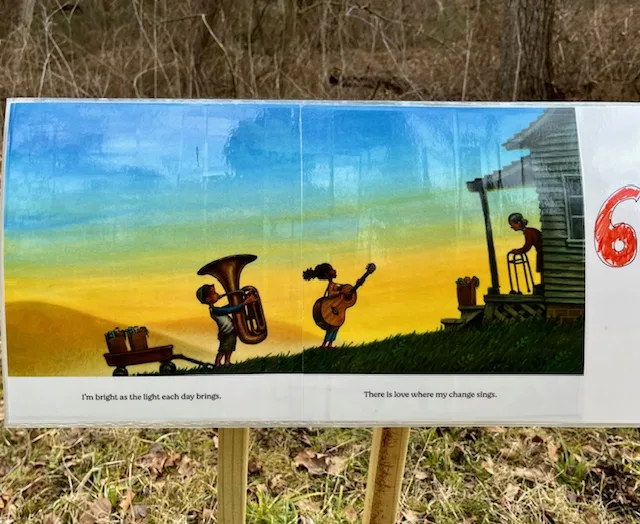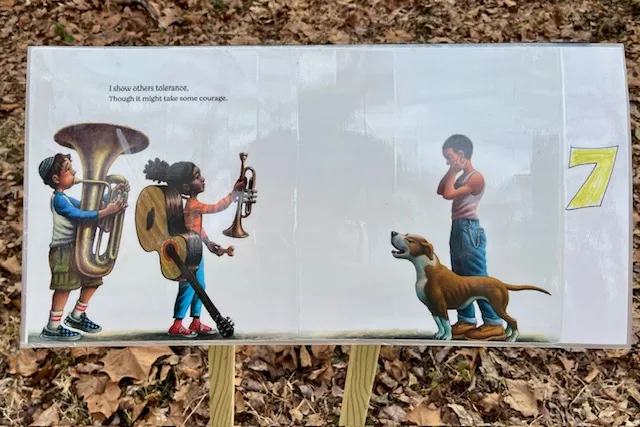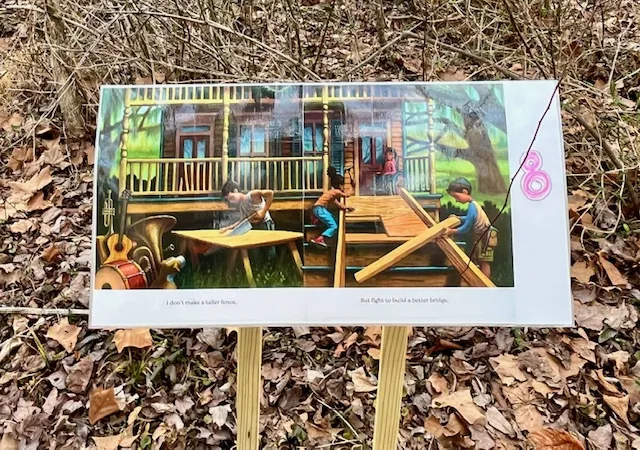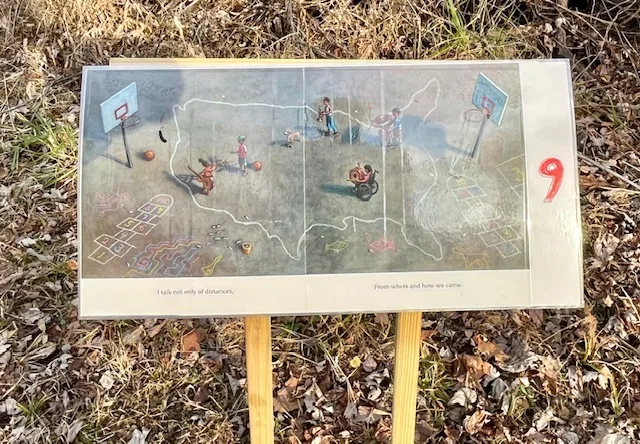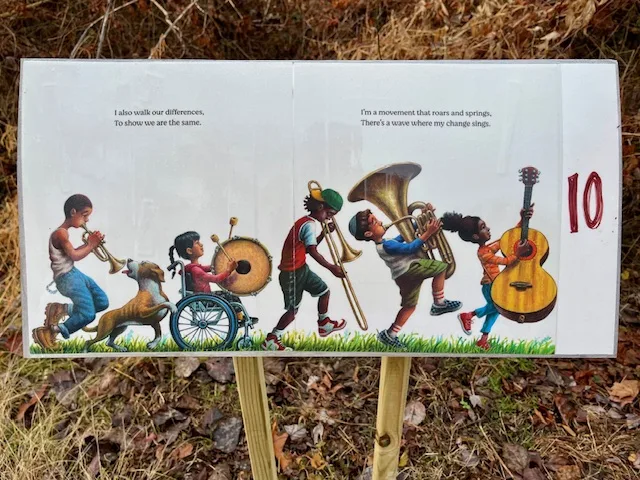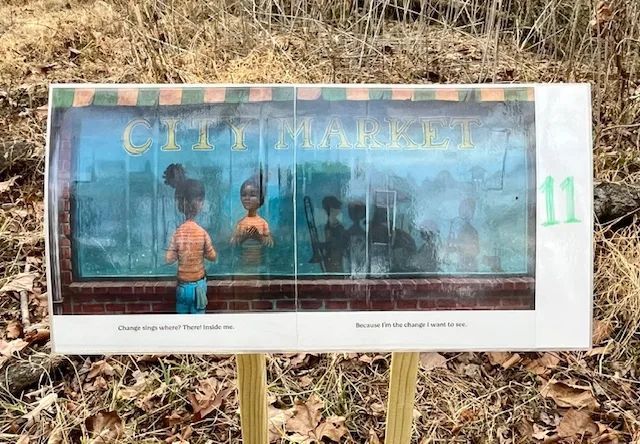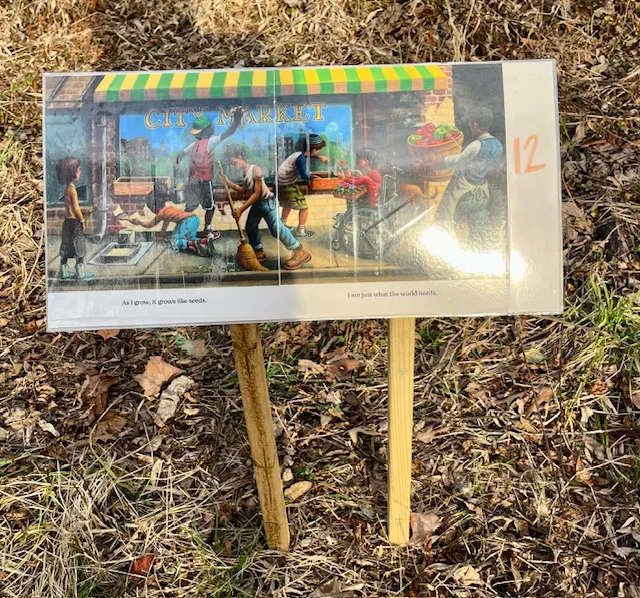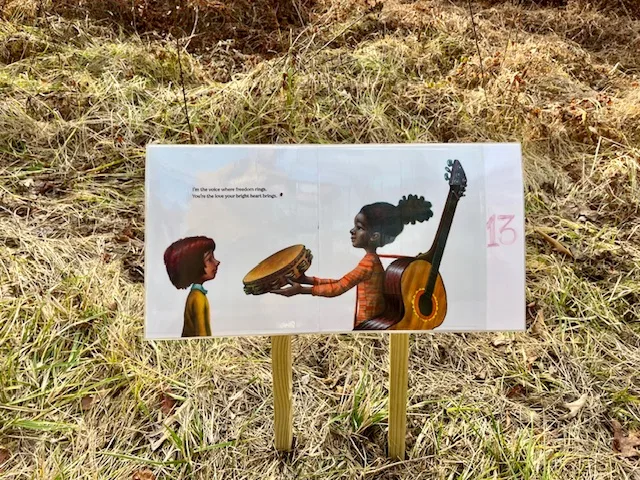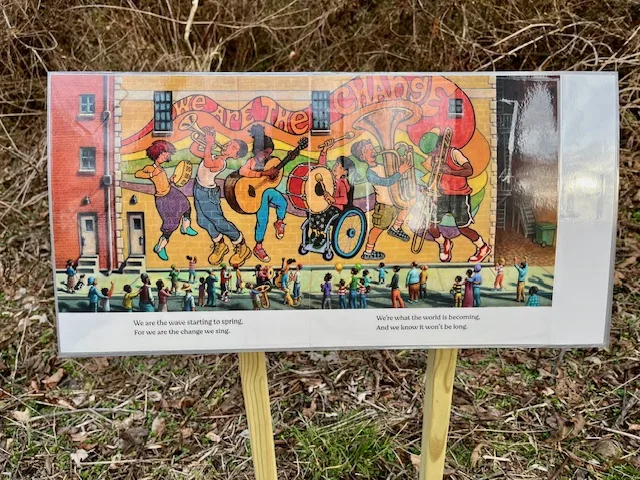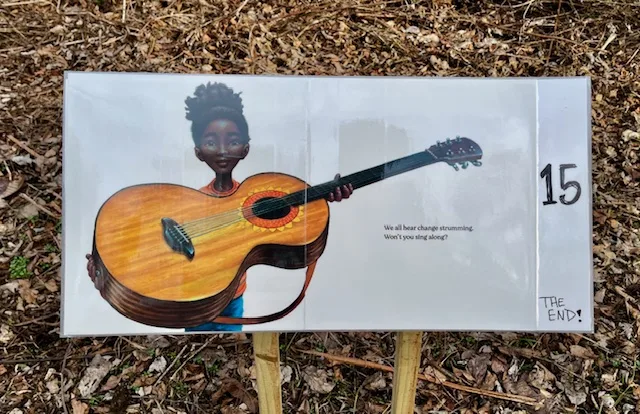Conserved public spaces have measurable impacts on our lives: research shows that spending time outdoors improves both physical and mental health, and can even improve students’ grades, lower blood pressure and drive economic growth. If you enjoy outdoor adventures like I do, lace up your boots and come with me as we explore a couple of these new parks that opened in 2024, as well as one potential future park.
Walk & Bike
Bike and pedestrian connectivity are a great way to enhance quality of life and create healthy, thriving urban communities. The gains to a community are numerous and can include expanded transportation options, greater economic development opportunities, and improved health and wellness.

Fifth Annual Mobility Summit is Largest Yet
By Peter Krebs, Charlottesville/Albemarle Community Advocacy Manager
Full video of Thursday Presentations | Full video of Friday Panel Discussion | View All Photos
Charlottesville, VA (March 6 – 7, 2025) Every year, leaders, professionals, advocates, business owners and passionate people come together at the Active Mobility Summit to find ways to improve walking, biking, running and everyday access to nature in Charlottesville and Albemarle County. Part celebration, part learning opportunity, part work-session, it is an opportunity for attendees and their organizations to identify ways to collaboratively tackle problems that none of them can solve alone.
This year’s Active Mobility Summit (the fifth one) was much larger than any before (more than 150 attendees over two days). That enthusiasm was due in large measure to this year’s theme: the Three Notched Trail (TNT), a proposed multi-use trail that will connect the City of Charlottesville to the Blue Ridge Mountains through the rolling countryside of Albemarle County. This year’s Summit served to unofficially launch the two-year design effort.
The event was divided into two parts to accommodate people’s diverse schedules. Both sessions were free and included food, drinks and abundant networking and fellowship. Both also included guest speakers but the events were not the same.
The Thursday evening session was for a general audience. The Friday morning workshop (the next day) was for advocates and professionals who wanted to dig deeper. The tone of both gatherings was inspirational but also highly practical and focused on solving problems.
Thursday: a Public Convening on Transformative Possibilities
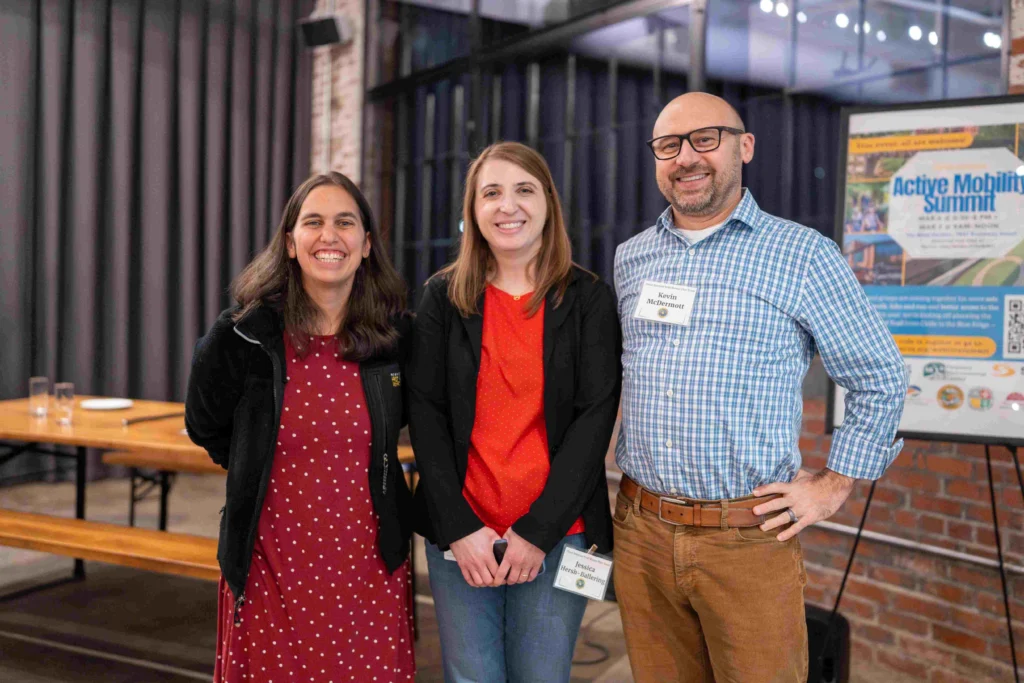
The Thursday, Mar. 6 session was full of fellowship, information and inspiration. Albemarle County officials described the upcoming trail planning and design process. Next, Cat Anthony, executive director of the Virginia Capital Trail Foundation, spoke about that fabulous trail connecting Richmond to Williamsburg — and what Charlottesville area residents can learn from it.
Three Notched Trail: What, How and Why
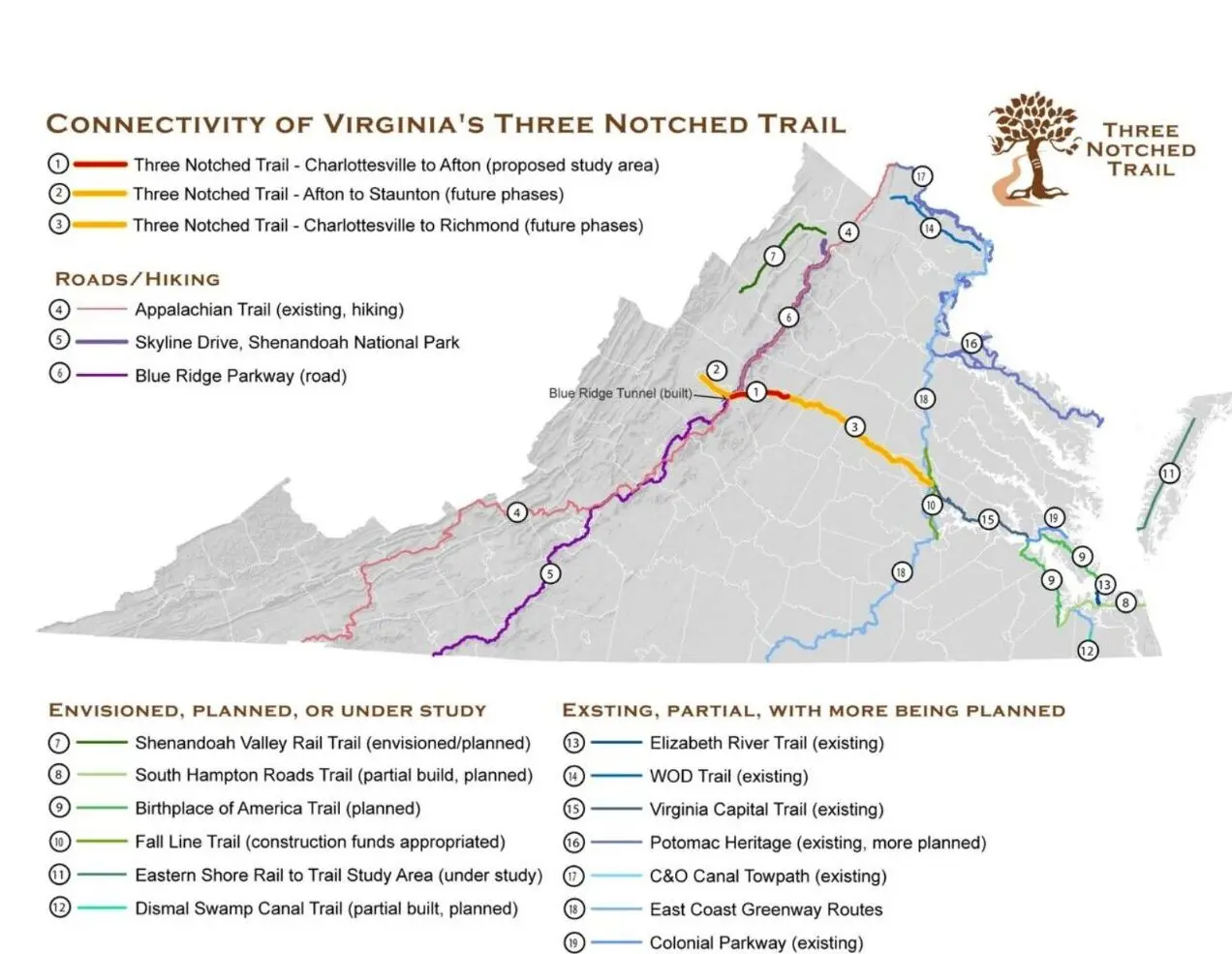
Jessica Hersch Ballering and Kevin McDermott, of Albemarle County’s Office of Community Development provided an overview of the $2 million, two-year effort. They started by clarifying what type of trail is being designed. It will be an approximately 24-mile shared use path from the City of Charlottesville through western Albemarle County to the Blue Ridge Tunnel.
To qualify for transportation dollars the trail will need to be at least 10 feet wide, with a maximum grade of 5%. There is some flexibility about the surface but shared-use paths are typically paved. This trail will provide an off-road, low-stress connection between Charlottesville, Crozet, the Afton Tunnel (and beyond), passing through suburban and rural areas, and will be connected to a broader state-wide network.
Next, they laid out the process, which will start with the development of a Master Plan that identifies the preferred alignment through an alternatives analysis and lots of public engagement. The next steps will be to create shovel-ready designs for a few high-priority segments that could be started first to begin to solve the most pressing gaps. The project will include an implementation plan that creates a timeline and identifies likely funding sources.
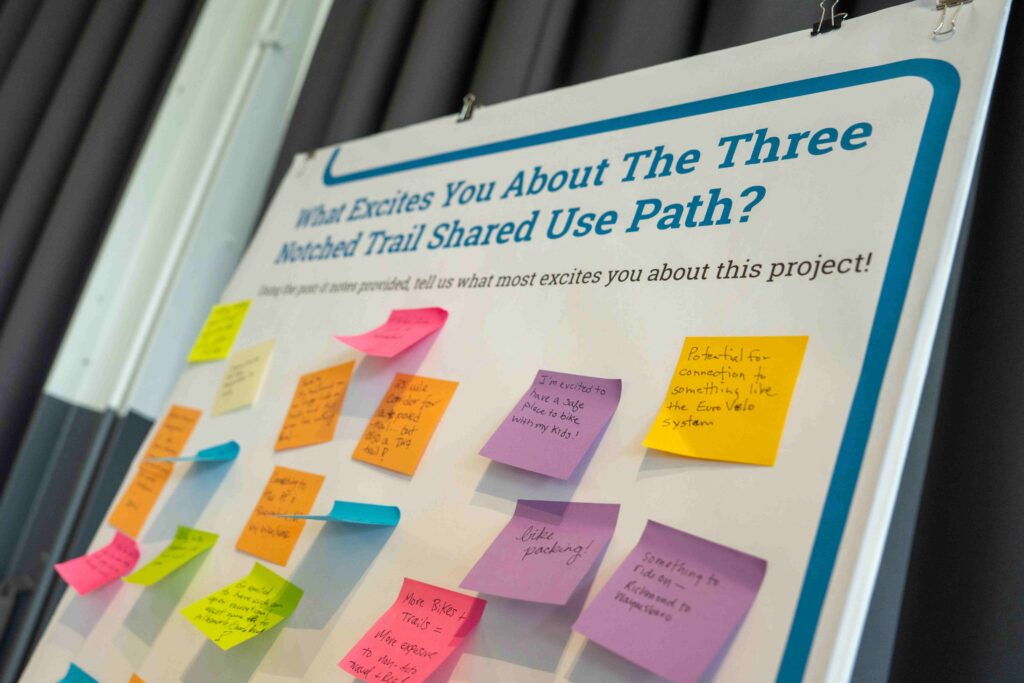
Their presentation proactively answered some commonly asked questions, such as what route the trail would follow (to be determined) and how much it will cost to build (a lot). They finished by outlining the project’s intended benefits. These include improving safety, providing more transportation options, reducing greenhouse gas emissions, promoting better health, igniting small business and economic growth opportunities, and improving quality of life.
Members of the project consultant team (Vanasse Hangen Brustlin, Toole Design Group and EPR PC) were present and had a table where they collected ideas and feedback.
Learn more about the TNT Plan at https://engage.albemarle.org/three-notched-trail-master-plan
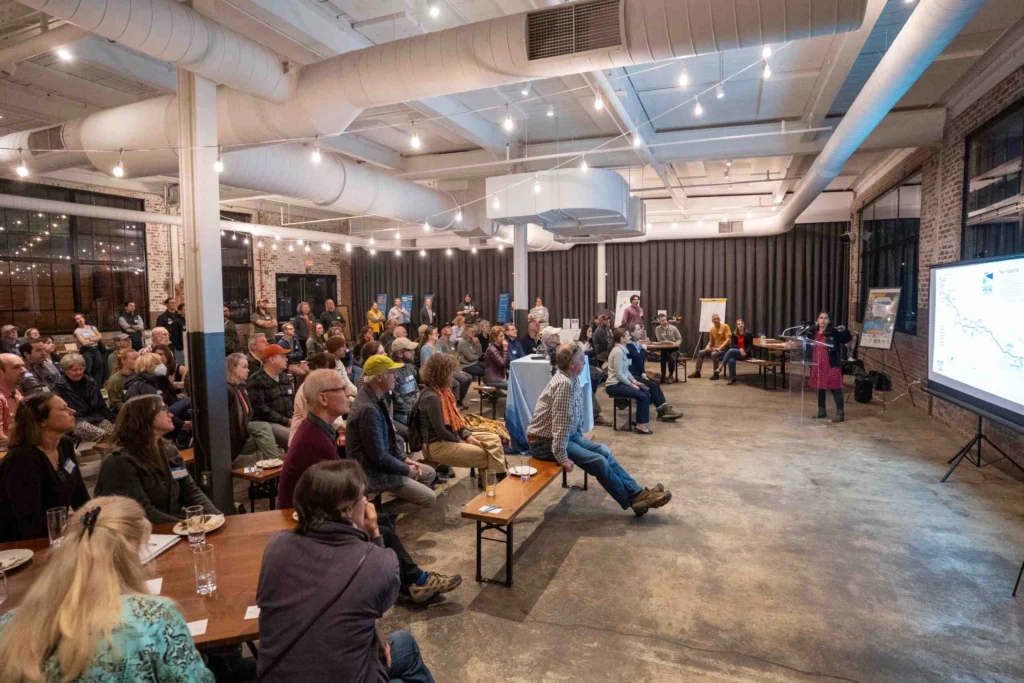
A Capital Trail for Everyone
Next, Cat Anthony gave an inspiring presentation about the Virginia Capital, a 51.1-mile paved, protected multi-use trail from Richmond to James City County / Williamsburg. It is used by more than a million people every year. She explained how the trail came about, what obstacles were overcome and how, who uses the trail today and how it impacts the community.

She emphasized that it is not a bike trail. It is a trail for everyone to exercise, commute, or simply enjoy fresh air. Many people who go there would not run or bike at all without this safe environment to do so. She noted that many early trail opponents became supporters; “Some people initially wanted a fence between the trail and their property; later they wanted a gate.”
Cat spoke of the importance of organized community support through the Capital Trail Foundation, a non-profit organization that shepherded the trail through construction, and now manages the trail and its programs.
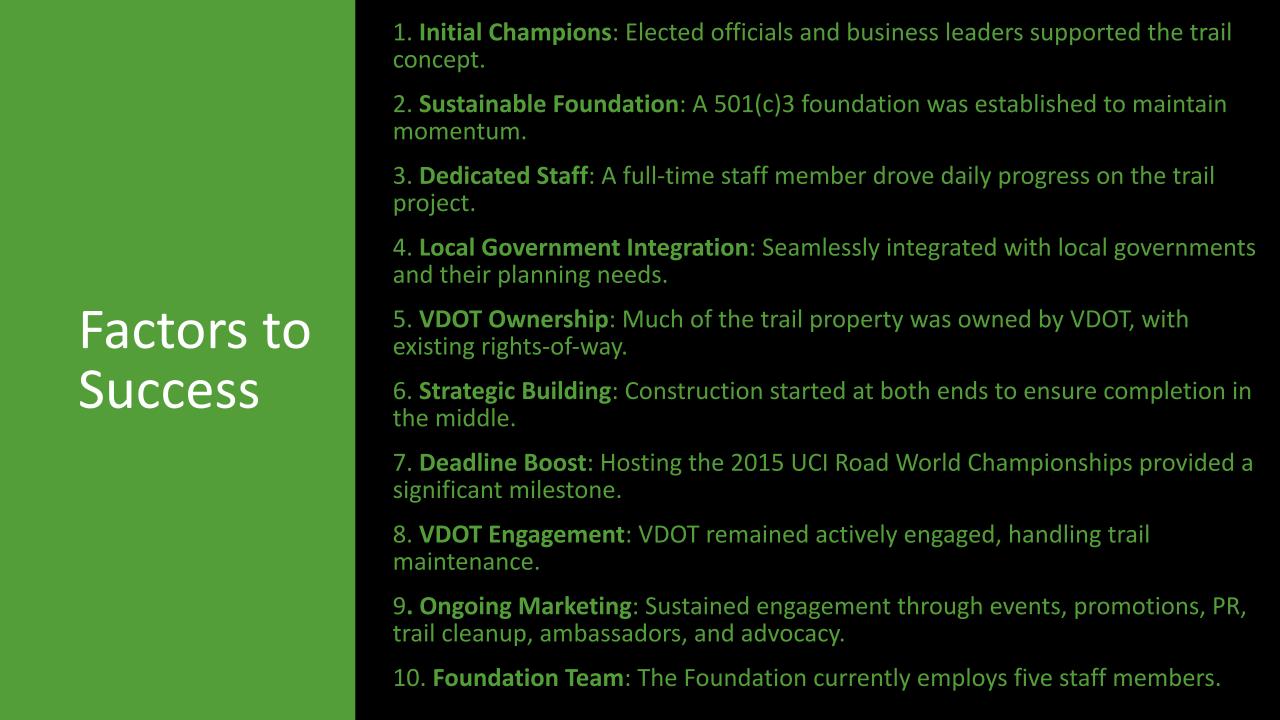
Cat spent a portion of her presentation talking about why it would be a good idea to build the Three Notched Trail. She described the economic and social benefits the trail would bring, citing a 2018 study showing that Capital Trail had generated $8.9 million in economic activity, supported 99 full-time equivalent jobs and $3.6 million in wages that year. Those numbers have probably increased substantially since the COVID-19 pandemic.
She also noted that the successful RAISE grant application says a lot about TNT’s merits because that grant is extraordinarily competitive. She said that people across the Commonwealth would benefit, especially if the trail manages to connect with other regional greenways. That is the intention and it is part of the reason why the Capital Trail Foundation is so supportive.
Learn more about the Virginia Capital Trail at https://www.virginiacapitaltrail.org/
An extensive question and answer session followed, during which audience members asked questions about both trails. The evening concluded with more fellowship and opportunities for one-on-one and small group discussions.

Friday: A Focused Workshop for Stakeholders
The next morning, about 70 people (half of whom had not attended the evening program) showed up for detailed conversations on how to successfully get the Three Notched Trail built. There was a panel discussion, small-group workshops and plenty of informal conversation over free coffee and breakfast.
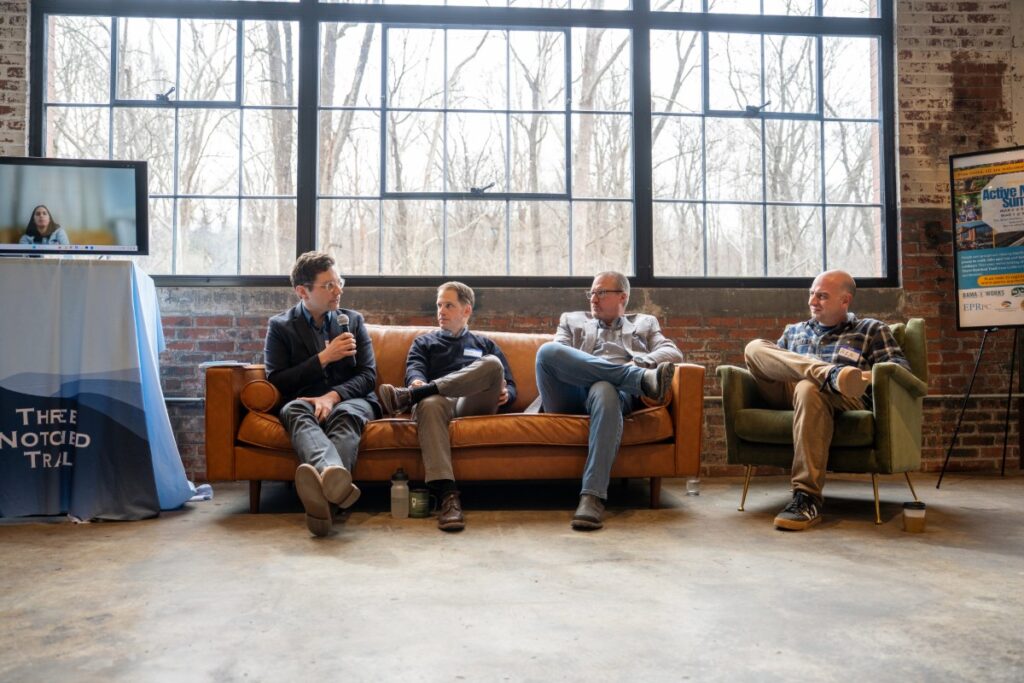
Wins and Challenges from Across Virginia
Ben Chambers, Charlottesville’s transportation planning manager, led a discussion of leaders of existing and emerging trails from across the Commonwealth.
Cat Anthony, executive director of the Virginia Capital Trail Foundation, re-joined the discussion, this time remotely from her office in Richmond. She is also the president of the Virginia Trails Alliance. She began her response to a question about lessons learned by pointing out that no one regrets building the Capital Trail. She’s excited that its success is spawning similar efforts all across the country.
Brantley Tyndall, director of BikeWalkRVA, is a leading proponent of the Fall Line Trail. When complete, the Fall Line Trail will connect Ashland to Petersburg via Richmond and cover 43 miles, spanning multiple localities and jurisdictions. That trail started with a well-produced Vision Plan. Brantley spoke about the galvanizing impact the plan had, along with the extensive conversations that went into it. That early dialog will help assure that, when built, the trail will improve the lives of the many people who live, work and go to school near it.
Elliott Caldwell’s organization, the East Coast Greenway Alliance, is making progress to connect 3,000 miles of protected greenway from Maine to Florida. He’s constantly impressed that greenways like the one he’s working on don’t just physically link destinations. They are places where people from many different backgrounds come together and meet in a common space.
Dwayne Jones, Waynesboro’s director of Parks & Recreation is working to string together the city’s emerging South River Greenway and is the visionary of the Rockfish Gateway Trail that will connect the City of Waynesboro to the Blue Ridge Tunnel and, eventually, to the Three Notched Trail. He spoke about the tremendous opportunity of connecting to Shenandoah, the Crozet Tunnel and the Blue Ridge Parkway, which is America’s most-visited park. He added that it is much easier to win local support for large projects if the leverage significant external resources, such as Federal funds. He has been more successful when that is the case.
All of the panelists spoke about the importance of mobilizing citizen activists early to generate momentum and having an organization in place to keep the project moving and pursue opportunities. Once a trail is built, people tend to love it, but that support organization is crucial in the beginning, and later for maintenance and programming.
Celebrating Community Champions
The Mobility Alliance periodically recognizes local leaders and volunteers who are tenacious and who accomplish difficult things. A volunteer usually crafts a handmade award that is fun and kindheartedly goofy to embody our values of community and joyful camaraderie.
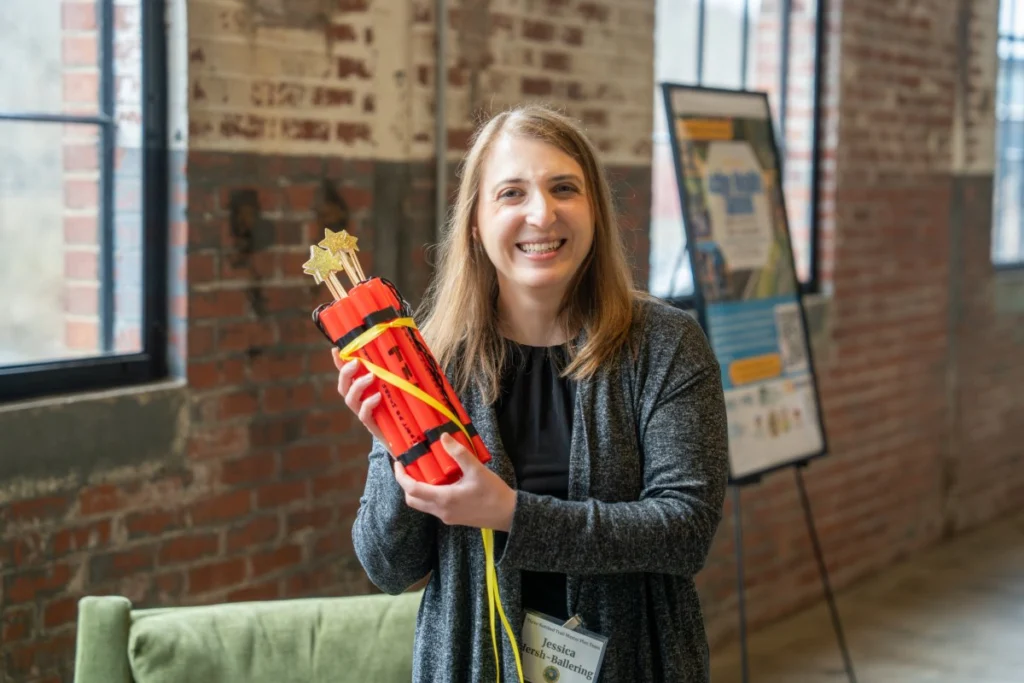
This year, the Mobility Alliance recognized Jessica Hersh-Ballering, for the work she did to obtain the $2 million dollar RAISE grant that is funding the TNT design. She has created numerous other wins like closing Free Bridge Lane to cars, shepherding multiple transportation projects and inspiring more people to ride e-bikes by organizing a community film screening.
Jessica is moving back to her native Wisconsin but will leave a significant legacy behind.
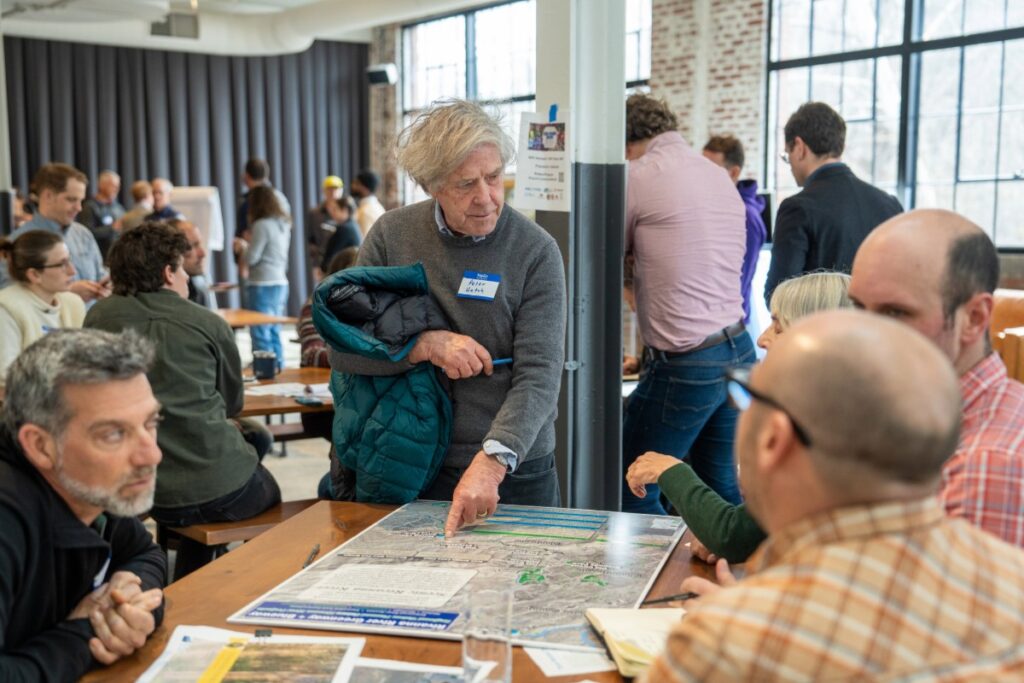
Generating Collective Impact through Strategic Doing
One key purpose of the Mobility Summit is to bring people together to tackle large problems that no group or entity can resolve alone. None of us have everything we need but together we do.
This year’s attendees formed three large groups to explore topics related to the Three Notched Trail that require local action.
About half the room stepped aside to dig deep into the idea of community involvement. They had subgroups that discussed the formation of an advocacy organization, organizing events and research trips, and how to make sure that the planning process includes authentic participation from everyone who will be impacted.
A second group discussed what the Three Notched Trail might look like within the City of Charlottesville, where it will pass through fully-built communities that may not have space for new, dedicated facilities. That might include making existing roads and sidewalks safer, incorporating consistent signage, and interpreting local history.
A third group considered how a future “TNT-East” might connect to Richmond and the Virginia Capital Trail. A first segment of that trail is actually within reach along the Rivanna River (the Old Mills Trail). This 4-mile greenway, which passes visible traces of the original Three Notched Road as well as Thomas Jefferson’s birthplace, is currently in its own planning phase.
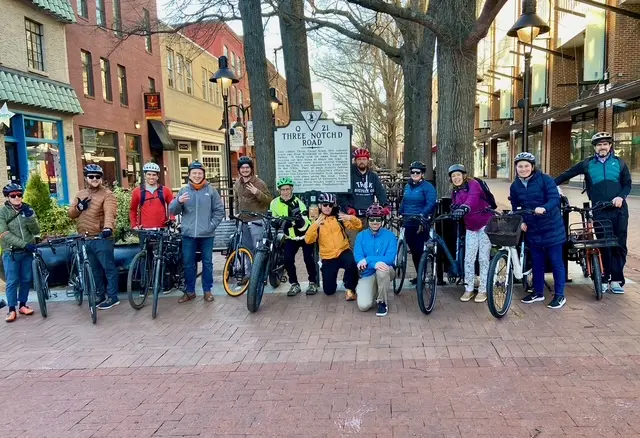
It’s More Fun to Ride – and Work –Together
Both sessions of the summit began and ended with group bicycle rides from downtown to the Wool Factory and back. These were organized by Charlottesville BPAC, the city’s Bicycle and Pedestrian Committee. BPAC is one of many groups that promote walking and biking in the City for transportation and pleasure.
BPAC is part of the larger Piedmont Mobility Alliance, the coalition that organized the summit. The Mobility Alliance is active throughout the year and will be meeting again March 31 from 4-5:30 p.m. at the Charlottesville Parks and Recreation office (find more details here). The main agenda item will be the coalition’s next large-scale effort. Bike Month (May) will include a full calendar of rides, events and programs.
Meanwhile we are compiling notes from the work groups, answers to most of the audience questions, and a list of resources is underway in the crowd-sourced program document. We invite attendees add their own notes there and to assist with the transcription. If you would like to learn more about the Active Mobility Summit, the Piedmont Mobility Alliance or other local efforts to improve walking, biking, transportation, and trails, please contact Peter Krebs (pkrebs@pecva.org).
Sign up for updates at www.pecva.org/mobilityadvocate.

Biscuit Run Park: First-Rate Outdoors Experiences for More People, Everyday
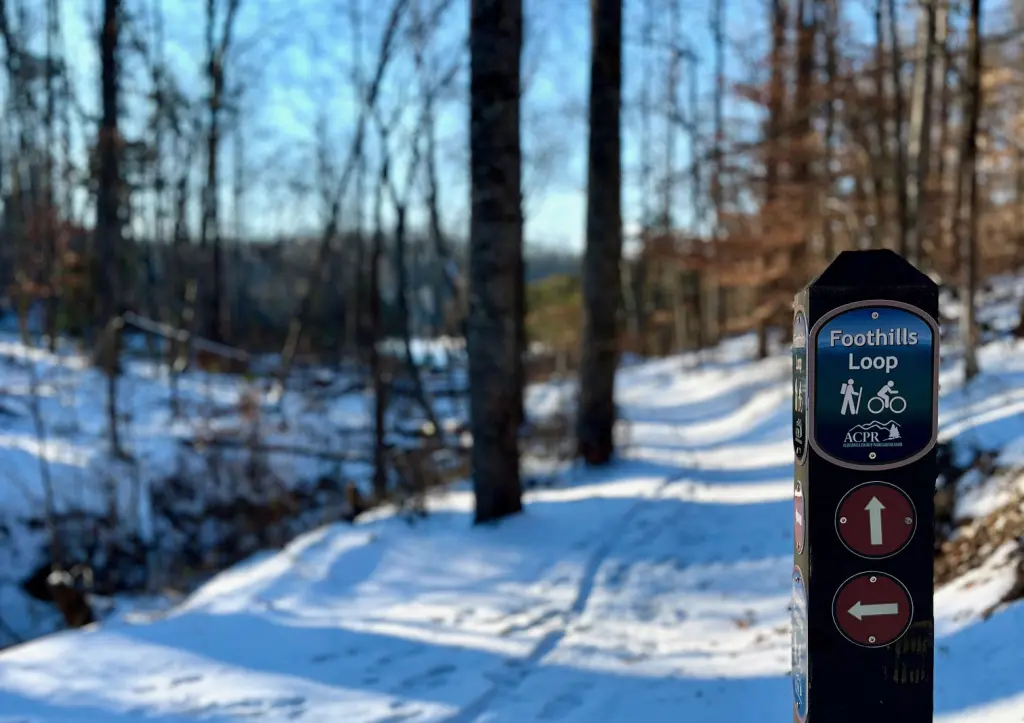
At nearly 1,200 acres, Biscuit Run is twice the size of the County’s next largest park, the Patricia Ann Byrom Forest Preserve. Apart from its enormous size and diverse ecosystems, what makes Biscuit Run Park so special is its location. It is both close to Charlottesville and in the part of the county where most of its people live. While the park itself is a work in progress, PEC is collaborating with the County and neighboring communities to make the park better connected — and more accessible — to area residents.
Albemarle County has several gorgeous local parks, as well as one of the nation’s premiere national parks: Shenandoah. Because most of those places are located in the rural area or on the county’s edges, most area residents have had to pack up and make a daytrip to enjoy these parks. That’s if they have the time and the wherewithal to do so.
Biscuit Run changes all of that.
This new signature park is located in the heart of the community. Its many offerings, including seclusion, diverse habitats, more than 8.5 miles of well-marked trails, and abundant fresh air are now available to far more people within a walking, biking or a short drive’s distance. There are heritage trees, multiple streams, a pond with beavers, historic home sites and much more. These assets can now be part of people’s everyday lives.
We know that regular exercise and everyday access to nature improve our lives in myriad ways, from improving kids’ grades to lowering blood pressure to driving economic growth. We also knew that many existing parks and privately managed preserves are beginning to feel over-crowded. This vast new park can absorb many visitors, offering educational and stewardship opportunities that can bring the love of the outdoors and a sense of stewardship to more area residents, with benefits in both the present and the future.

What’s Next for the Park
Albemarle County is taking a phased approach to developing Biscuit Run Park and will be adding recreational amenities (such as trails and a few flat fields) while also strengthening stewardship through the protection of designated natural and cultural resources.
The next phase will include basic infrastructure (like a maintenance yard and more parking), many more trails (including a mountain bike skills area), and a second entrance and pedestrian bridge close to Southwood, for which PEC and our allies fought hard and won.
At the same time, Albemarle County is undertaking an ambitious project to restore a mile of the stream valley from which the park derives its name. These projects are being done thoughtfully and intentionally to minimize disruption of vital ecosystems.
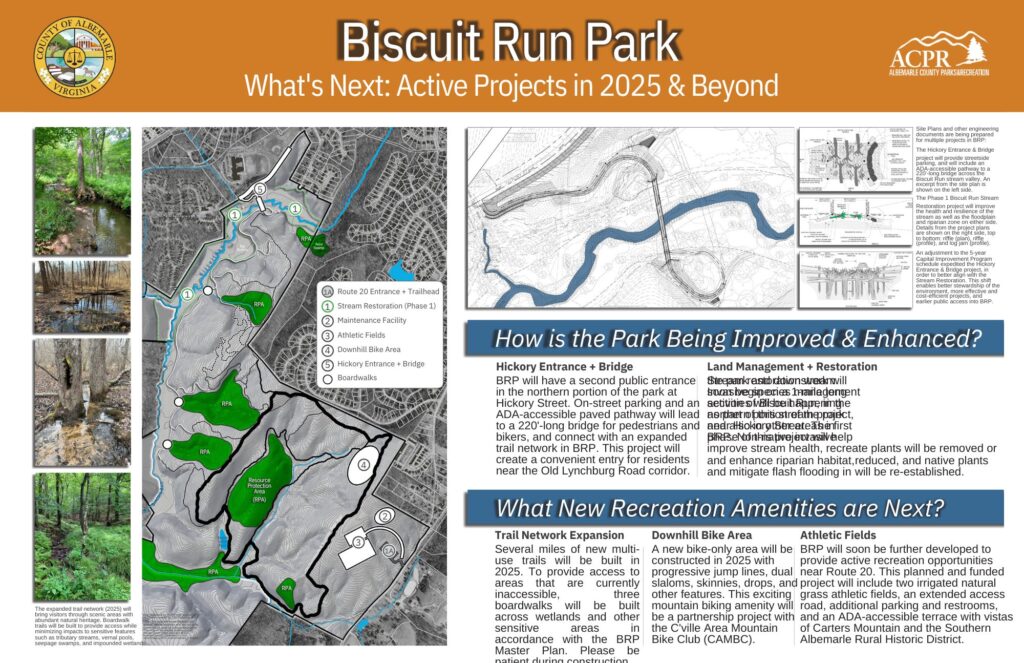
Because the underlying land is owned by the Virginia Department of Conservation and Recreation, the landscape has multiple layers of protections. Most of the park shall forever remain predominantly forest and meadows. The County must follow best practices in everything it does there (such as trail building) and it is committed to the removal of invasive species, which arrived during the decades of transition from working farm to abandonment to public park.
What we see now is only the beginning. I encourage you to spend some time reading the county’s website about the park. It’s packed with details.
What’s Next for PEC
PEC has been advocating for this park for more than 15 years and we are far from finished.
For example, we led the design of that second entrance at Southwood, with support from the Anne and Gene Worrell Foundation, plus Southwood and other area residents. Surplus funds from that grant are now being used to design a mile-long streamside greenway that will connect the trailhead to Southwoods’s future Monacan Nation Tribute Park.
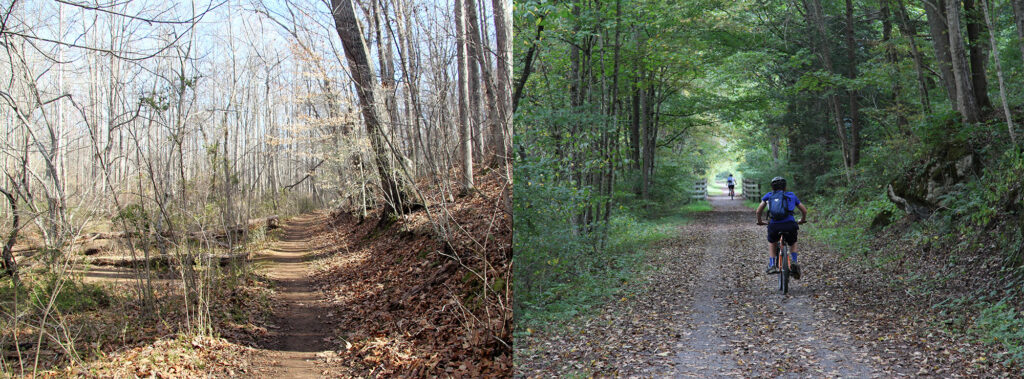
PEC is also working with the County and residents of the surrounding neighborhoods to expedite the creation of walk/bike connections to the rest of the community and the wider greenway network. Our next push will be to construct a greenway path along the stream valley to connect the park to the neighborhoods downstream, including Mill Creek, Foxcroft as well as Fifth Street Station and the City of Charlottesville.
Further Advocacy is Needed
After hundreds of conversations with area residents, we are convinced that the overwhelming consensus is that they do want well-designed connections to the park and elsewhere. This is particularly true if the trails are done in a way that is both useful for getting around and if they maintain a bucolic natural setting. But it is by no means a sure thing that these connector trails will be built —– particularly the Biscuit Run Greenway. That is what we propose and we need your support.
Here are some things you can do right now:
- Sign up for our “Greenways” action alerts and email updates
- Ask the Board of Supervisors to fund better connectivity and access to the outdoors
- Support PEC so we can continue and expand this important work
We have gotten this far because, as a collective, we have been dogged in our advocacy. The County has delivered extraordinary results. But this is just the first step. Much more needs to be done.
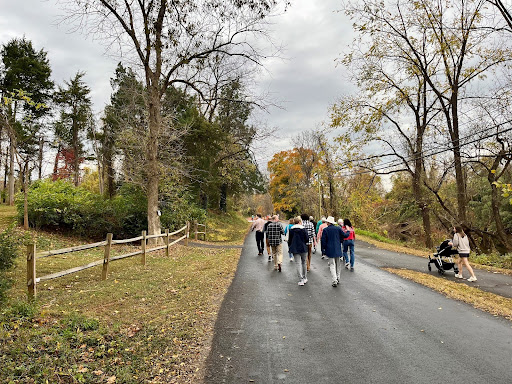
Free Bridge Lane is Closed to Cars, Open to the Public
As a result of longtime advocacy, Free Bridge Lane is now officially closed to cars in order to provide a free activity space to promenade, bike, skate, etc. along the riverside.
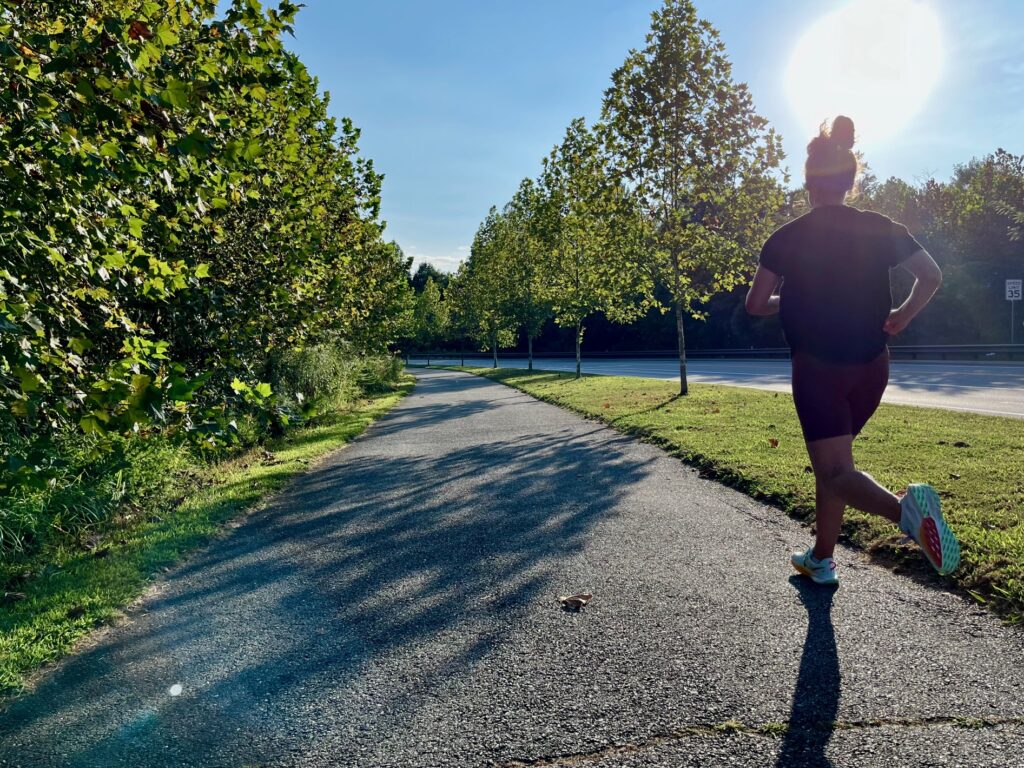
Reasons to Get Outside: Loop de Ville and a New, Central Greenway
Read on for a few upcoming events and a glimpse at a transformative greenway project that is within reach of being magnificent.

Community Events Help Us Think about Issues in New Ways

One of my favorite things about being a community planner is going to events and having conversations with people in informal settings, close to where they live. These gatherings tend to be a lot of fun. For example, the one I just went to had a vegan-hotdog-tasting station!
Community events are also great places to hear from residents about their everyday experiences. People are in good spirits and they have many great ideas, perspectives and inspiration. They force me to reevaluate my assumptions, which leaders and planners ought to do — and do so regularly.
This past Saturday, I had the pleasure of tabling at the third annual Healthy Streets Healthy People gathering in Booker T. Washington Park in Charlottesville, organized by our partners at the Move2Health Equity Coalition. I especially love this event because the theme aligns perfectly with my own professional focus, many attendees share my passion and it’s in a beautiful park.
Although I’m working on many projects and issues, I like to keep things simple when I’m meeting with the public. People are busy, and if they are kind enough to gift me with their time, I owe it to them to be concise. So I only had one key question that I asked everyone, which seemed like a fair exchange for me stamping their bingo card. Of course this often led to follow-up and extended dialogue, which was intentional. And I had other materials for people who were curious or wanted to go deeper.
I gave everyone the following prompt: “Here we are at the healthy streets fair; what makes a healthy street?” If clarification was needed, my follow up was, “What characteristics would make the street a place that boosts you up, rather than bringing you down?” Almost everyone had immediate ideas to share and had actually given the idea some thought. Most ideas were familiar (and on point) and some made me think about my work in new ways.

Some common topics included safety, stress reduction and inclusivity. Each of these contains a world of nuance. For example, sidewalk safety might mean not getting hit by a car while walking along it or trying to cross a street. It might mean knowing that assistance is always available without being harassed by other people or by law enforcement. It could mean being able to negotiate the space without falling or being injured. Or not getting shot. And on and on; each idea merits a voluminous discussion of its own.
One conversation really stood out to me as an interesting framing, with implications far beyond the street. A woman told me that her spouse is a bus driver, who often complains that pedestrians who are focused on their phones often do foolish things for lack of attention to their surroundings. Note that she was not blaming potential victims of traffic violence: we all agree that those behind the wheel have a greater responsibility and that distracted driving is a public health challenge on par with drunk driving.
But she was asking why we can’t have an urban realm with enough appeal to be so interesting in itself that people wouldn’t feel the need to pull out their devices. That is a worthy question with implications about how we attend to one another, our spaces and ourselves.
It also gave other suggestions I heard (e.g. street art, trivia questions on little signs, foodshop windows, other people, conviviality, etc) new texture. Our conversation passed beyond the street through other spaces including classes and living rooms, which is to be expected at a health fair. But our public spaces have an important role to play.
It would be interesting for me to write a follow-up in which I compare these responses to what I learned at the same gathering two years ago when I asked attendees, “What makes a successful park?”
I entered the field of urban planning in hopes of creating a mutually-reinforcing triad of creativity, community engagement and practices that promote public health and well-being. Here was validation and a reminder that the work is urgent and anything but boring. Plantings, tiny libraries, street art and the like are not trivialities: they could save some lives.
Residents possess a wisdom that inspires good work and prevents costly or harmful mistakes. But we need to actually listen, which is not always easy. Conversations like this one, and the many others I had on that afternoon, are also fuel. They provide energy to go forward and they provide the ingredients necessary to solve the complex problems we face.
—
Peter Krebs is the Community Advocacy Manager for the Piedmont Environmental Council. His work focuses on promoting walkable, bikeable, livable communities in Charlottesville and Albemarle County, Virginia. He can be reached at pkrebs@pecva.org
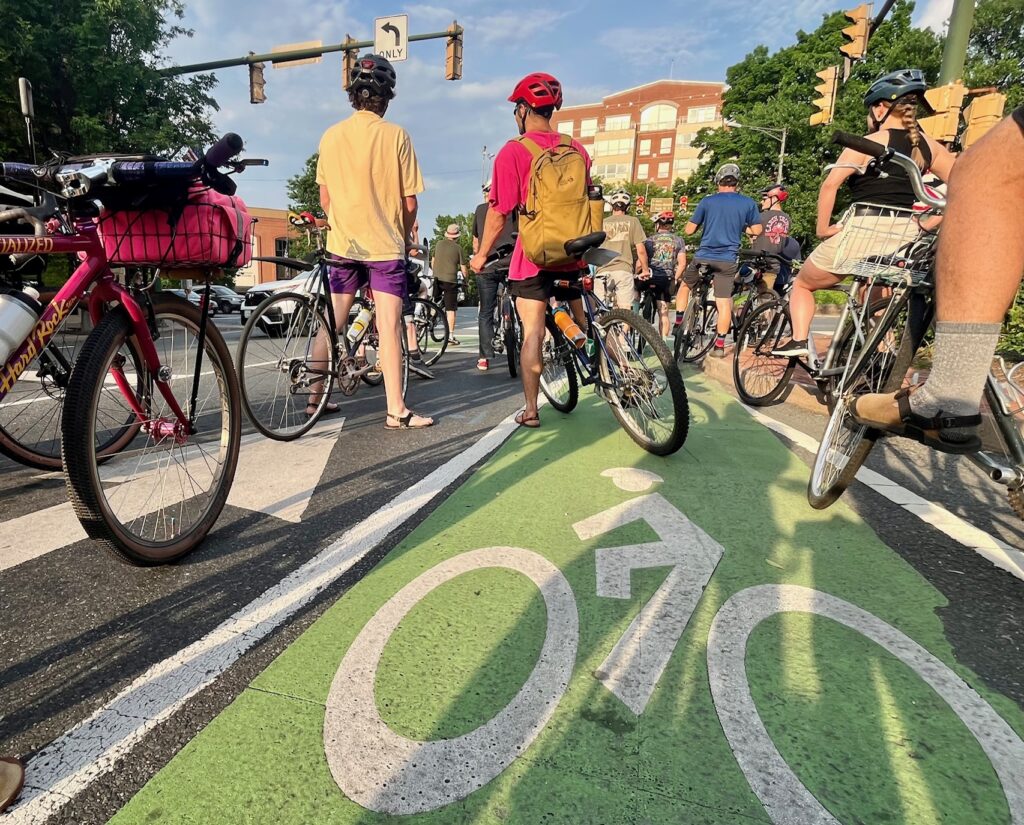
Bike Month 2024 Recap
Bike Month 2024 was a success with dozens of group rides, educational opportunities and bike visibility events throughout May.
Spring Updates From Albemarle and Charlottesville
PEC has been working to support conservation programs, engage with AC44 in Phase 3 and make the most of Bike Month this spring.
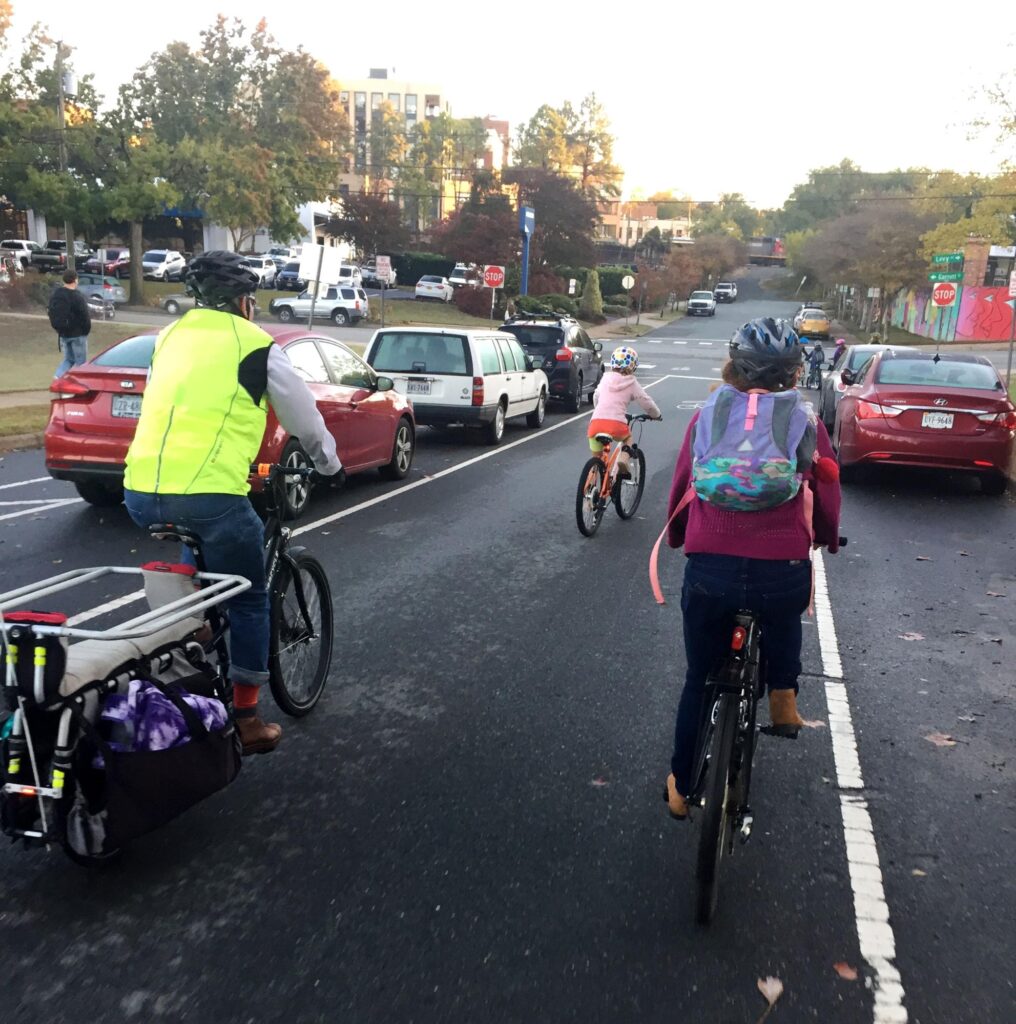
Bike Month 2024
Celebrate Bike Month this May in Charlottesville and Albemarle! There will be a full calendar of exciting events, gatherings and group rides.

